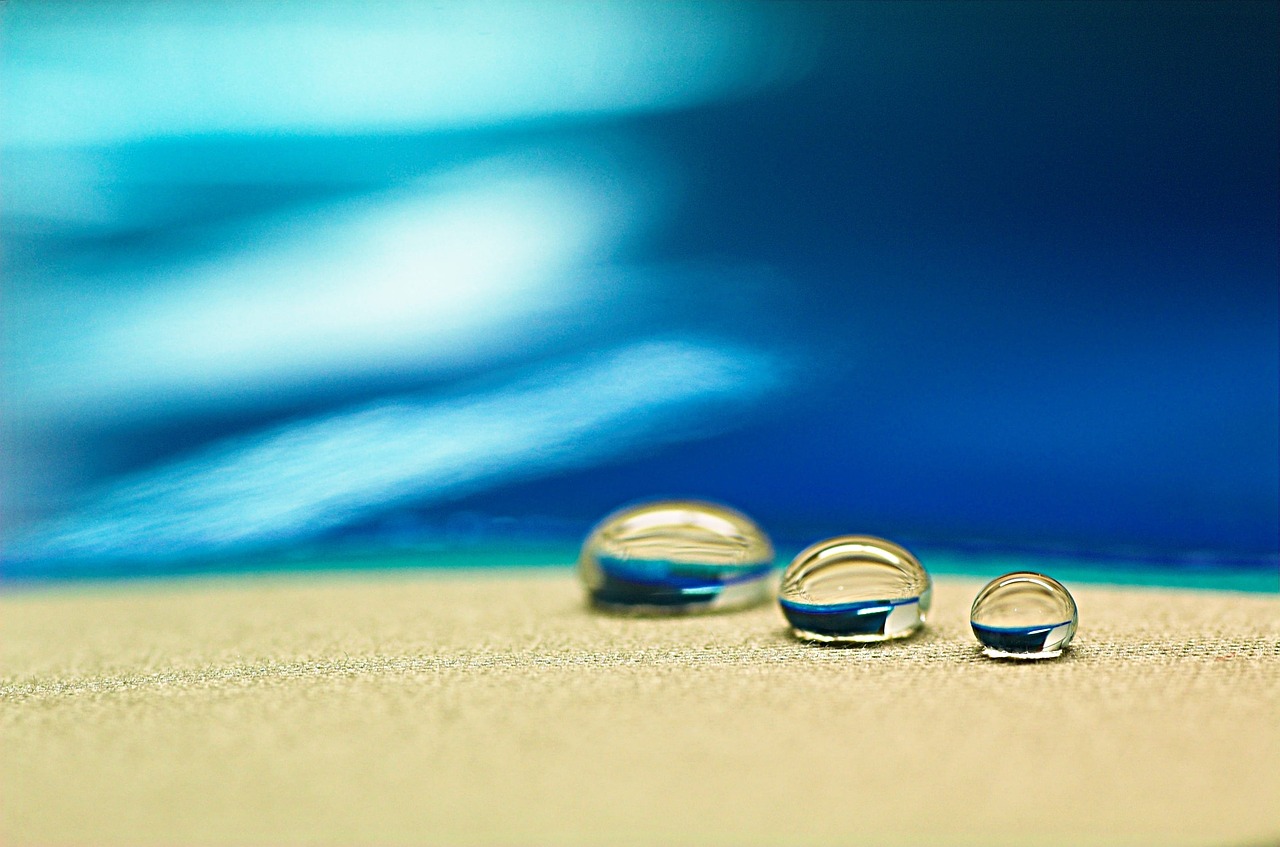Thermal and waterproof technologies in textiles

When we find ourselves in freezing cold outside, being it during a trek in the mountains or just walking home on a cold winter night, whether it was planned or not, we know that we need some thermal protection. Situation is similar if we are getting wet in storming rain or when we getting too hot in the summer sun. Fortunately, our technology has got advanced enough to create some solid solutions for most of those situations. In this article we will briefly describe the technology behind some thermal solutions, with an emphasis on animal friendly technologies.
Protective technologies for an extreme cold and heat for various industrial and military applications exist as well. We will not cover them in this article, however.
Our body's comfort safety zone, when it comes to skin temperature at rest, is ranged between about 19-44 degrees Celsius (66-111 Fahrenheit). Comfortable feeling is also related to skin moisture coverage - above 30% is generally uncomfortable for the majority of us.
Thermal insulation is based on a practice of keeping an immobile thin air layer next to our skin. Same type of air layer made mobile will cool the body and remove sweat and moisture.
Thermal regulation
There are some new thermal regulation technologies has been developed recently, as well as some older and well established ones.
One interesting new thermal regulation approach is phase change materials. Phase change materials are materials that contain microcapsules incorporated into the fiber structure of a fabric during fiber's manufacturing process. Material enclosed in those capsules solidify in cooler temperatures. Solidification phase absorbs some heat from the environment. If it's getting hotter material included in microcapsules melt a bit, the melting releases some heat which cools the wearer down. Phase changing materials can help keep our body temperature around comfortable range, at least when we heat or cool around material's reaction temperatures range, also called thermal window. Most common active phase change material incorporated into clothing textiles (inside microcapsules) is paraffin, which has a thermal window between 20 and 35 degrees Celsius (or 68-95 º Fahrenheit). Phase change microcapsules are usually embedded into synthetic fibers like acrylic, polyurethane or mixed into the foam.
Another new development in a thermal regulation textiles relies on the fact that mostly our bodies absorb and lose heat through the wavelength of microwave radiation. In spite of that our skin can not dynamically control this heat movement. This new technology uses a type of synthetically combined fibers that do exactly that - dynamically controlling microwave radiation heat movement as a function of a skin humidity, automatically warms up or cools down the wearer as needed. When wearer is hot, they sweat and a fabric lets some infrared radiation escape away and wearer's body temperature decreases. If opposite happens, wearer is cold and their skin gets drier - the fibers in a fabric “closing down” trapping the infrared radiation in and warming the body up as a result.
Warmth retention and heating fabrics
Any clothing type you put on your body creates some insulation of your body/skin from the environment by creating an additional immobile air layer between the skin and the outside. Good warm and thermal clothes just make it more effectively. Also the more of those immobile air layers we create the more insulation we will have. This can be accomplished by wearing several layers of clothing or by using a single peace that contained multiple layers.
In this section we'll describe some types of smart warmth retaining and heating patents available currently on the market:
First, some synthetic fibers manufactured hollow to trap the air inside and provide this additional immobile air layer within the fabric. This fiber structure resembles natural wool but here we get much lighter fibers that provide as good or even better insulation, have moisture wicking quality, are made very soft and cost significantly less, not to mention absence of animal cruelty during the production.
Other synthetic fabrics made with different approach, they are made from very thin fibers or, alternatively, as a combination of different fiber sizes that are woven very densely together to form a heat trap to prevent the heat from being radiated out of our bodies and escape.
Another approach produces two insulating layers with air layer trapped between them into what feels like one complex fabric. Trapped warm air layer provides an insulation barrier between wearer's body and an outside cold air.
Placing a filling material inside a coat is of coarse a classic. Synthetic and down filings are currently most common types. Synthetic microfiber fill is a better alternative to down as it is more waterproof, light weight and, unlike a natural down, will stay puffy even when wet during rain and snow.
Other type of technology is thermal reflective insulation. The main idea is covering an inner fabric of a garment with little reflective spots which are 'mirroring' the heat radiated out of wearer's body back and trapping it between the garment and wearer's body.
Another approach is garments that are actively heating the wearer. One example of a heating garments is chemical heating garments that are used in such applications as diving - to protect divers from the cold under water. Garments for this heating application include special chemicals which when in touch with water produce exothermic (releasing heat) chemical reaction warming a wearer up. Electrical blanket would be another commonly used heating garment example, even though electricity is doing the heating and not the fabric itself. Therefore this approach can hardly be used outdoors, especially not during long hiking.
Cooling technologies
The target of cooling clothes is to keep body core temperature in an optimal range of 36-37.5 ºC (97-99.5 ºF) while removing an excess moisture from wearer's skin. To achieved that the technology is focused on 2 basic mechanisms: convection of our body heat through air exchange and removing moisture from wearer's skin along with some heat that is released during sweating. This is done by keeping an air layer adjusted to wearer's body mobile. Moisture transmission is achieved by diffusion through fabric pores, movement along the fibers and /or through moisture absorption into fibers. Therefore moisture transmission characteristics depend on fabric absorption/adsorption and wicking properties which can be manipulated by the manufacturer by fiber chemistry and structure or fibers arrangement in the fabric (more about that in the segment on moisture management below).
There are some common cooling methods in textile industry:
One approach is fabrics that have mesh like structure of large and frequent pores between textile yarns. Those pores allow for very easy heat release and fast moisture and sweat evacuation and evaporation from the exposed skin. Implementation of that approach unfortunately makes if hard to sun-proof a garment at the same time. There is also important for the manufacturer to find the balance between an open mesh area yet not make the clothing item too transparent visually. This approach can be implemented for both clothing fabrics, where sometimes the mesh placed strategically along specific locations of the body (armpits, shoulders and so on) and upper part of shoes, especially sneakers.
Another smart approach is based on the fact that human body naturally releases a heat primarily in a wavelength of an infrared radiation. So the cooling solution is a fabric that is transparent to infrared radiation, yet opaque in a visible light (we wouldn't want to seem naked wearing it). That type of fabric allows free release of wearer's body heat through infrared radiation to the atmosphere.
As we mentioned above, a very important aspect of textiles that keeps a wearer cool is to transport sweat away from the body. Technologies like dri-fit work by moving moisture from wearer's skin to the outer surface of a fabric, where it can easily evaporate – depending on outside humidity, of coarse. This kind of fabrics are especially suited for sports activities.
Another important aspect of cooling textile technology is to prevent overcooling. To implement that it is important to finish the cooling function when the body stops an excess heat production.
Moisture management
We've described the importance of moisture removal for cooling fabrics in the above section of this article. The role of water blocking during rain and snow in freezing cold is obvious for warmth retention and sometimes even survival. Here we list and describe some moisture management and water proofing solutions used in the industry.
Water repellent fabrics
Some synthetic fabrics are produced with water resistance properties – hydrophobic materials. Production of those fabrics achieved mostly by applying a finishing treatments to them, for example: adding special types of polymers on a fabric surface. The clothes made from those fabrics are water repellent and therefore almost unwettable. In addition a lot of those fabrics are very fast drying, which together with water repellent properties is very useful during stormy weather conditions, moving through shallow water bodies during a trek and so on.
Hydrophilic fibers- meaning fibers that easily absorb water (opposite to hydrophilic materials described in the paragraph above), both synthetic and natural, are used sometimes on an inner garment's surface for moisture (sweat) absorption.
Other way to make a garment water resistant is to 'seal' the fabric itself by tightening it's fibers so closely together so spaces between them become really small and it blocks even the smallest rain water droplets from infiltrate through. The pores should be just the right size to allow for sweat to evaporate away through the fabric (from the inside out), but still being small enough for rain droplets to be blocked. Some synthetic fibers are being manufactured that way, and clothes made from them are available on the market.
Moisture wicking
Moisture wicking textiles production technologies concentrate on 2 main functionalities: moving the sweat by a capillary action to fabric outer surface and evaporating the moisture rapidly from there. Moisture wicking fabrics provide us with comfortable feeling and cool us off at the same time. Various synthetic fibers produced with moisture wicking qualities.
Cotton on the other hand does not have this quality, in fact it is the opposite – cotton yarns are quickly saturated with moisture and hold it for a long time, making it hard to dry moisture out.
Another moisture management approach we've described in a cooling clothes section above, we are talking about placing a ventilating mesh-like fabric in some areas to help moisture easily escape from wearer's skin and evaporate. Those ventilating areas are distributed specifically to increase an evaporation areas by exposing more skin surface in a more sweating areas.
It is important to transport moisture (sweat) away from your body for thermal regulation and comfort. In case your ware many layers, the goal is to move the moisture as far up those layers as possible, ideally to the outermost layer and let it evaporate away from there.
Ethical considerations
As always, we like to remind you about the importance of an ethical issues to kee in mind, issues like animal suffering, human workforce treatment involved and environmental sustainability. As a general rule, vegan, recycled and organic brands frequently are more environmentally friendly and will offer a better solution for the workforce treatment as well. Our awareness about those issues will push textile industry one step further towards solving them. Please keep those issues in mind during your next shopping trip before your paying for your next outdoor sports or hiking clothes, or anything else.
